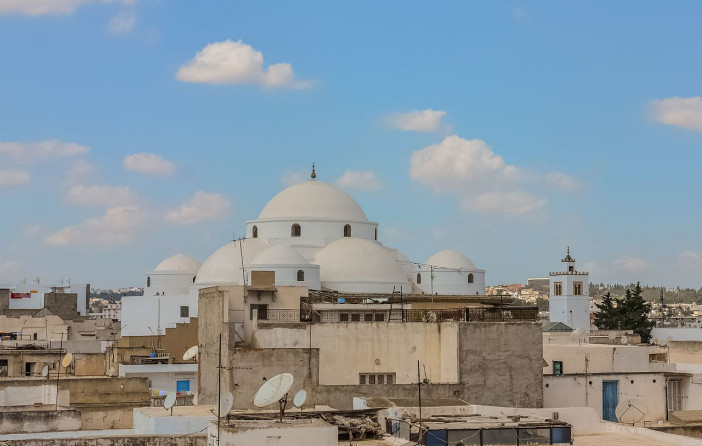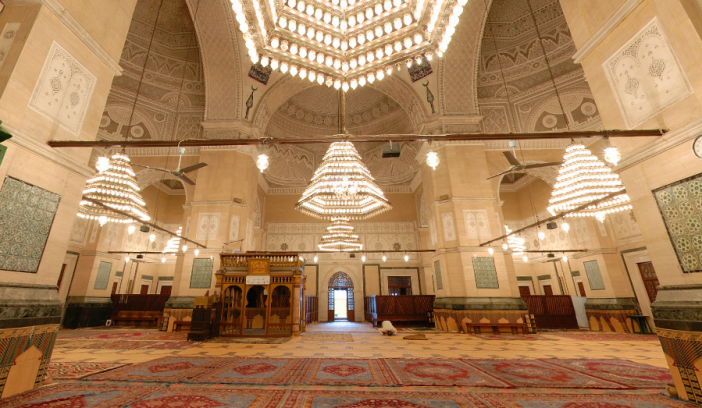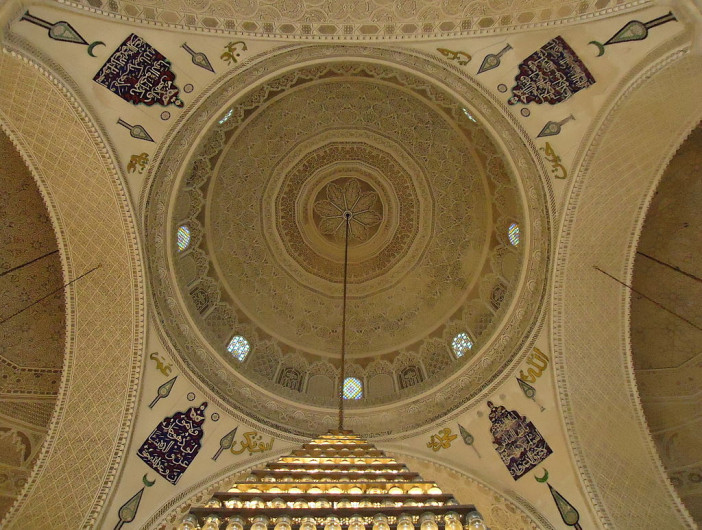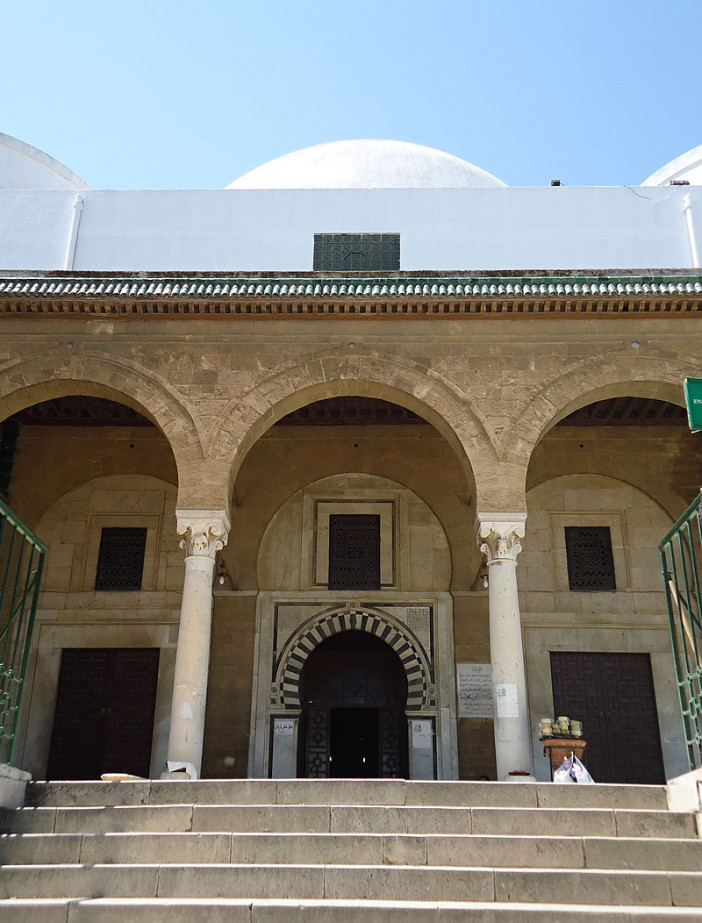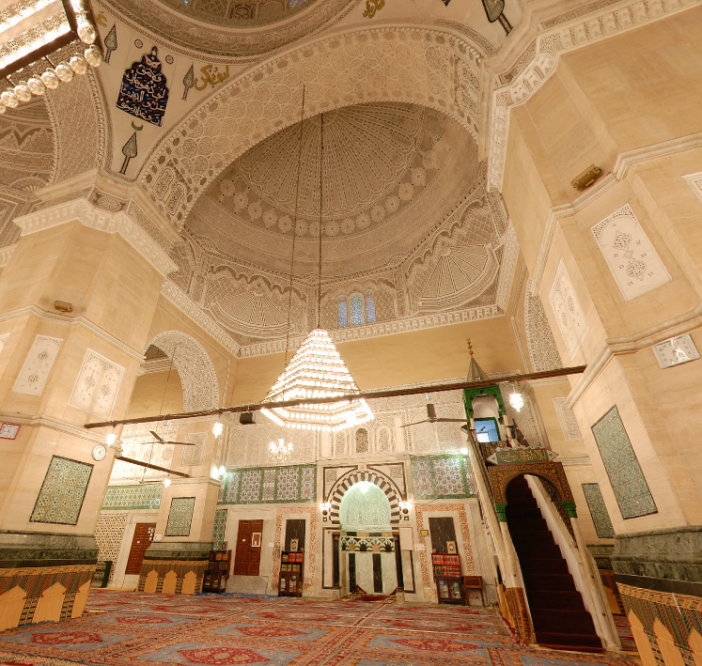Mohamed Bey al-Muradi Mosque (Sidi Mehrez)
History
The mosque was built at the end of the 17th century (between 1692 and 1697) and built on the model of the great Ottoman mosques, such as the Süleymaniye mosque, although it does not have a minaret. Initiated by Mohamed Bey El Mouradi, the work was not completed due to political unrest at the end of the 17th century.
The mosque is being restored from 1984 as part of a restoration program for the famous district of Bab Souika.
Urban and Architectural
It is the only domed mosque in Tunis. Turkish in inspiration, it is similar to Sainte-Sophie, the mosque of Sultan Ahmed in Istanbul and the Pecherie in Algiers.
The prayer room is constructed on a square plan and surrounded on three sides with galleries overhanging three U-shaped courtyards. The galleries are supported by marble columns with Turkish-style capitals decorated with acanthus leaves on the sides and scrolls at the corners. Inside, four robust 1.50 m wide pillars support a hemispherical dome on pendants which rises to 29 m above ground level. The dome rests on two superposed drums, one circular and the other octagonal. This central dome is supported by 4 semi-domes. At the corners of the hall, the roof is completed by four little domes placed on circular drums. Viewed from the exterior, the mosque is a collection of domes.
Description
References
https://islamicart.museumwnf.org/database_item.php?id=monument;ISL;tn;Mon01;4;en
Details
Location
Mosquée Mohamed Bey, Rue Sidi Mehrez, Tunis 1006
Worshippers
500
Owners
The Tunisian Government
Year of Build
1692–99
Area
3500
Drawings
Map
History
The mosque was built at the end of the 17th century (between 1692 and 1697) and built on the model of the great Ottoman mosques, such as the Süleymaniye mosque, although it does not have a minaret. Initiated by Mohamed Bey El Mouradi, the work was not completed due to political unrest at the end of the 17th century.
The mosque is being restored from 1984 as part of a restoration program for the famous district of Bab Souika.
Urban and Architectural
It is the only domed mosque in Tunis. Turkish in inspiration, it is similar to Sainte-Sophie, the mosque of Sultan Ahmed in Istanbul and the Pecherie in Algiers.
The prayer room is constructed on a square plan and surrounded on three sides with galleries overhanging three U-shaped courtyards. The galleries are supported by marble columns with Turkish-style capitals decorated with acanthus leaves on the sides and scrolls at the corners. Inside, four robust 1.50 m wide pillars support a hemispherical dome on pendants which rises to 29 m above ground level. The dome rests on two superposed drums, one circular and the other octagonal. This central dome is supported by 4 semi-domes. At the corners of the hall, the roof is completed by four little domes placed on circular drums. Viewed from the exterior, the mosque is a collection of domes.
Description


